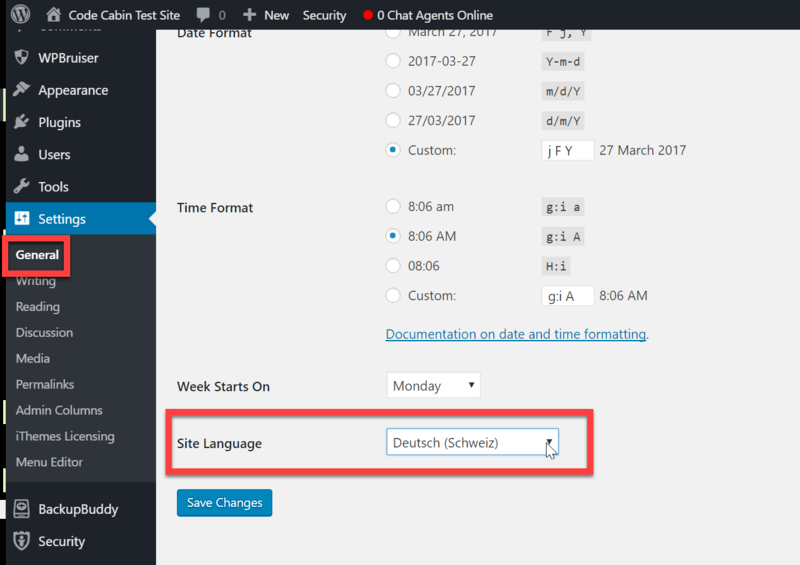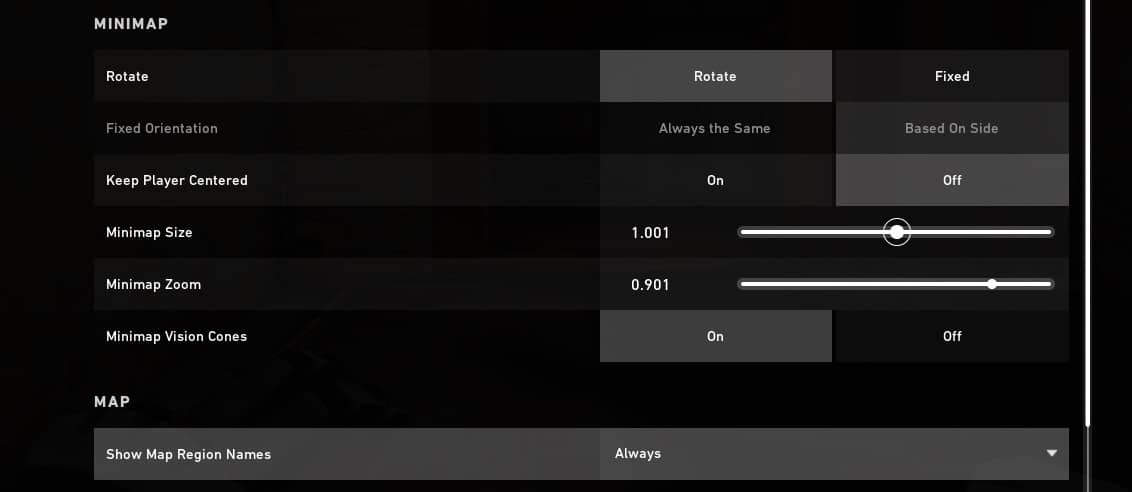
But if I turn off (End) the navigation, then the names of at least most cross streets don't get shown on the map. One thing that is weird, though, is that the names of cross-streets will display while I am navigating to a destination. But I DO know that if I was navigating (to Home or Work), and End navigation, then the map orientation remains in 3D-Heading Up mode. I am also trying to recall if the orientation is different if I just have the map displayed, but have never started navigating to a destination. I guess I don't recall if the behavior is the same, when navigating to some other location or address. That said, the vast majority of the time I am navigating someplace, it is to my pre-saved "Home" and "Work" destinations (I am using the Nav to look at alternative routes, due to traffic conditions). Select the Evo M51 Board Go to Tools > Board. Select the Alorium Technology SAMD (32-bits Cortex-M4) Boards package and then click Install.
#Changing map settings evom install
Type alorium, in the search field and you will see an option to install board files for Alorium SAMD compatible boards. Whenever I am navigating someplace, the map is in that orientation, without me having to change anything. Install Alorium’s Evo M51 board package Go to Tools > Board > Boards Manager. I have my map orientation set to 3D-Heading Up. The wire colors are the same on the MAF connector as on the ECU harness.I am puzzled a bit by the above discussion. This can also be pulled from the MAF connector under the hood. That would be pin 85 (orange) on a 2G ECU harness or pin 16 (green w/yellow stripe) on a 1G ECU harness or pin 65 (pink) on an EVO1-3 ECU harness. The blue wire needs to be connected to the ECU's baro input. The wire colors are the same on the MAF connector as on the ECU harness. That would be pin 92 (black) on a 2G ECU harness or pin 24 (green w/black stripe) on a 1G ECU harness or pin 72 (black) on an EVO1-3 ECU harness. The black wire needs to be connected to the ECU's sensor ground. Using Haltech products for street/road use on public roads or highways is. Haltech products are designed and sold for sanctioned off-road/competition non-emissions controlled vehicles only and may never be used on a public road or highway. This can also be pulled from the MAF connector under the hood. In many states, it is unlawful to tamper with your vehicles emissions equipment. That would be pin 81 (green w/yellow stripe) on a 2G ECU harness or pin 23 (green w/red stripe) on a 1G ECU harness or pin 61 (green w/red stripe) on an EVO1-3 ECU harness. The red wire needs to be connected to the ECU's +5v line. But if you do not, then you'll have the green pigtail shown in this image. If you have our SD cable then, of course, you can just plug it straight up no wiring or soldering required.

Doing so basically tells the ECU to ignore the IAT input when running SD.Īlthough we can't possibly document all the different combinations of MAP sensors going to all the different ECU inputs, we will at least document the “typical” case of installing our GM-style Omni power 4-bar sensor to the car's baro input. It will change it to point straight up on the map, which may not necessarily be North.

Pressing the direction symbol twice will not change the direction of travel icon to point North. Just make SURE you go into the Direct Access tab and zero out the SDTempWeighting table. The direction of travel icon will be relative to that. But if you find yourself in the situation where you simply can't get an IAT sensor installed but you need to enable speed density operation anyway, go ahead. It is absolutely better to have one, no question about it. RUNNING WITHOUT AN IAT SENSOR: You can run speed density reasonably well without an IAT sensor at all if you have to.

The other wire should be connected to the ECU's sensor ground. Either wire can be connected to the ECU's IAT input. The IAT sensor has two wires coming out of it. Or, more likely, you'll want to use those wires off the MAF harness under the hood since that's where the IAT sensor is actually being installed. You'll want to use pin 72 (red w/blue stripe) on a 2G ECU harness or pin 8 (green w/orange stripe) on a 1G ECU harness or pin 52 (red w/black stripe) on an EVO1-3 for this. This is the only input that's compatible with the speed density logic inside the ECU.

You must connect your IAT sensor to the ECU's IAT input. GM Intake Air Temperature P/N 25036751, pig tail 12102620Īpparently also the exact same as the GM IAT.


 0 kommentar(er)
0 kommentar(er)
